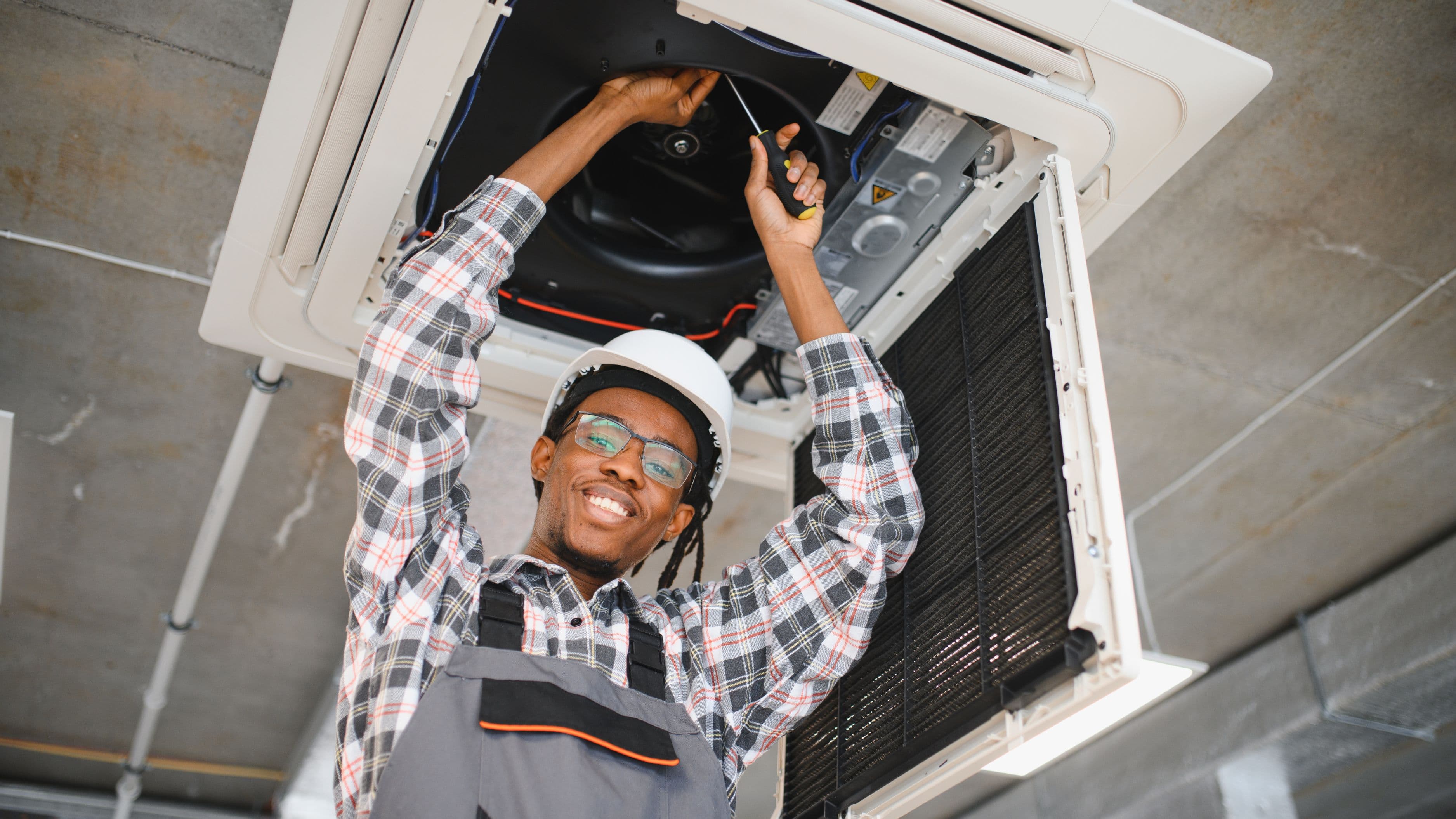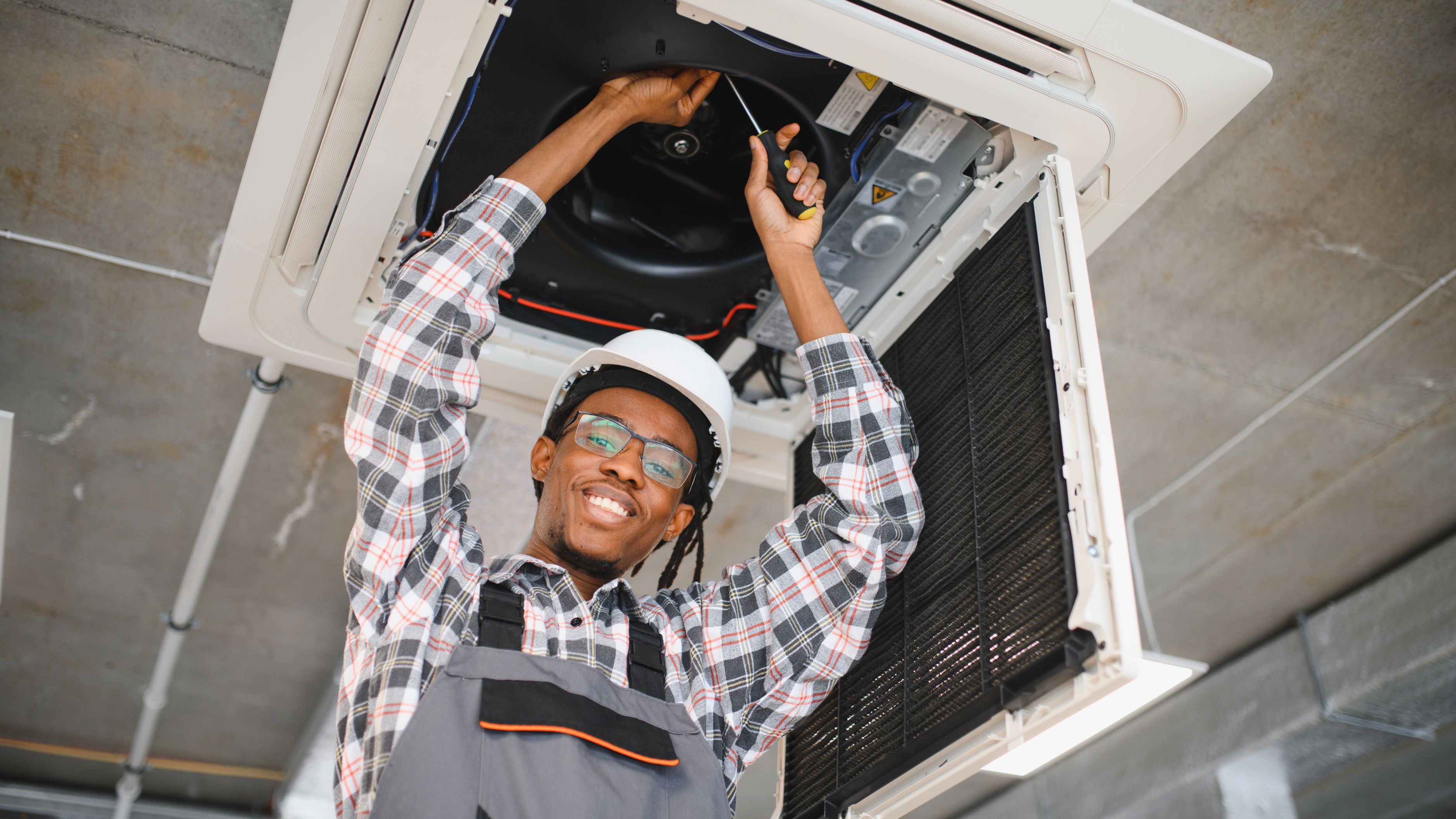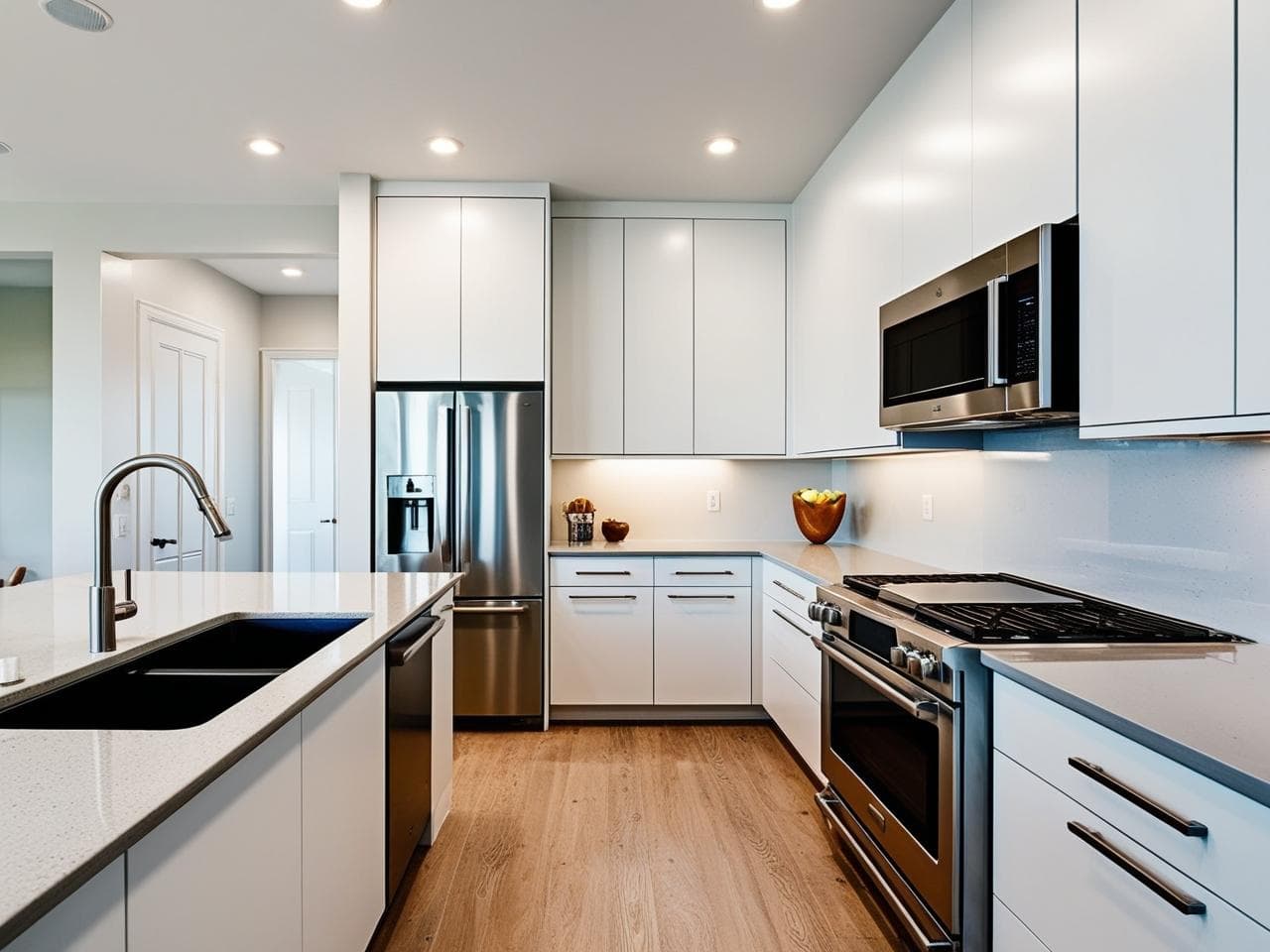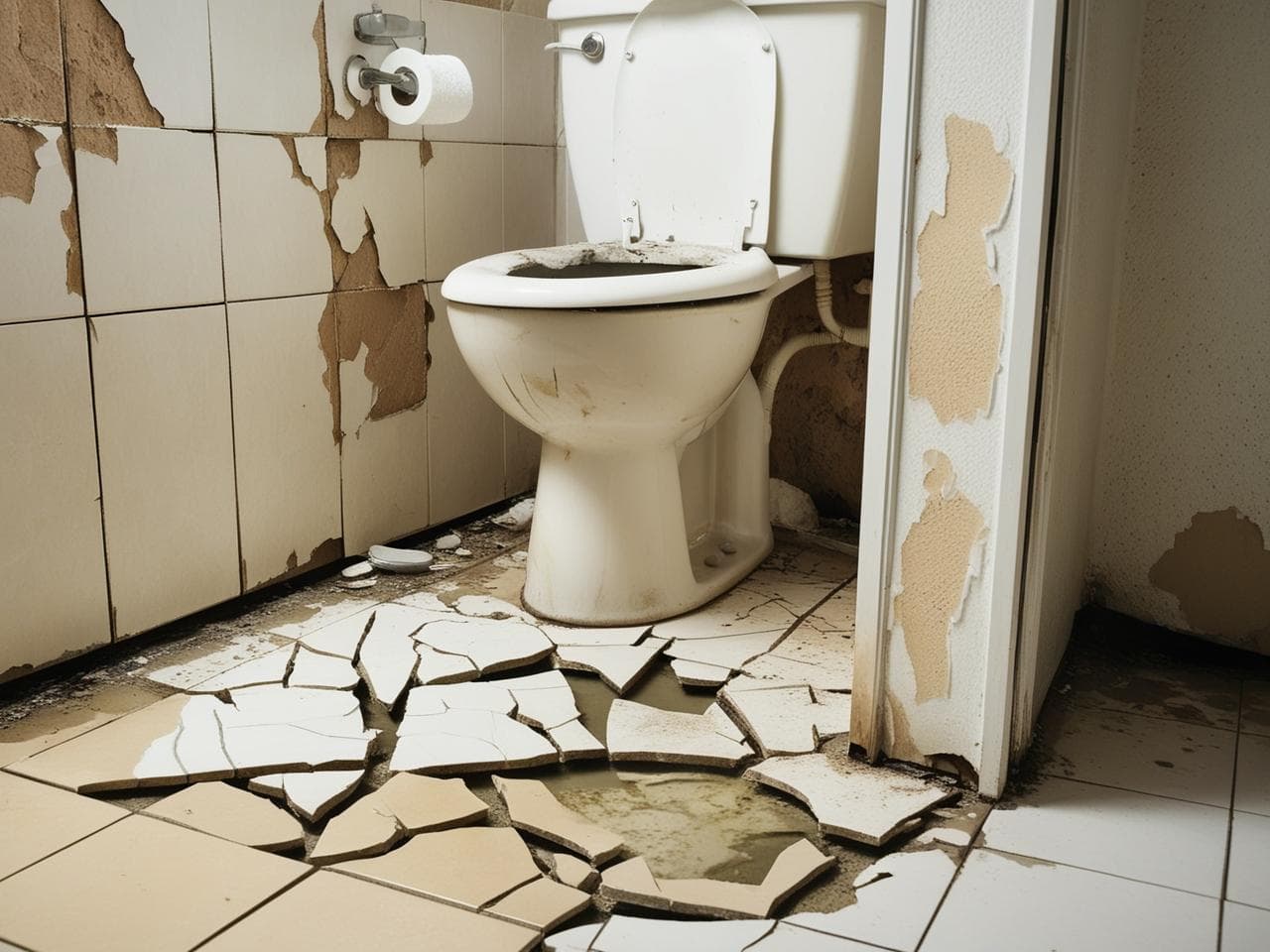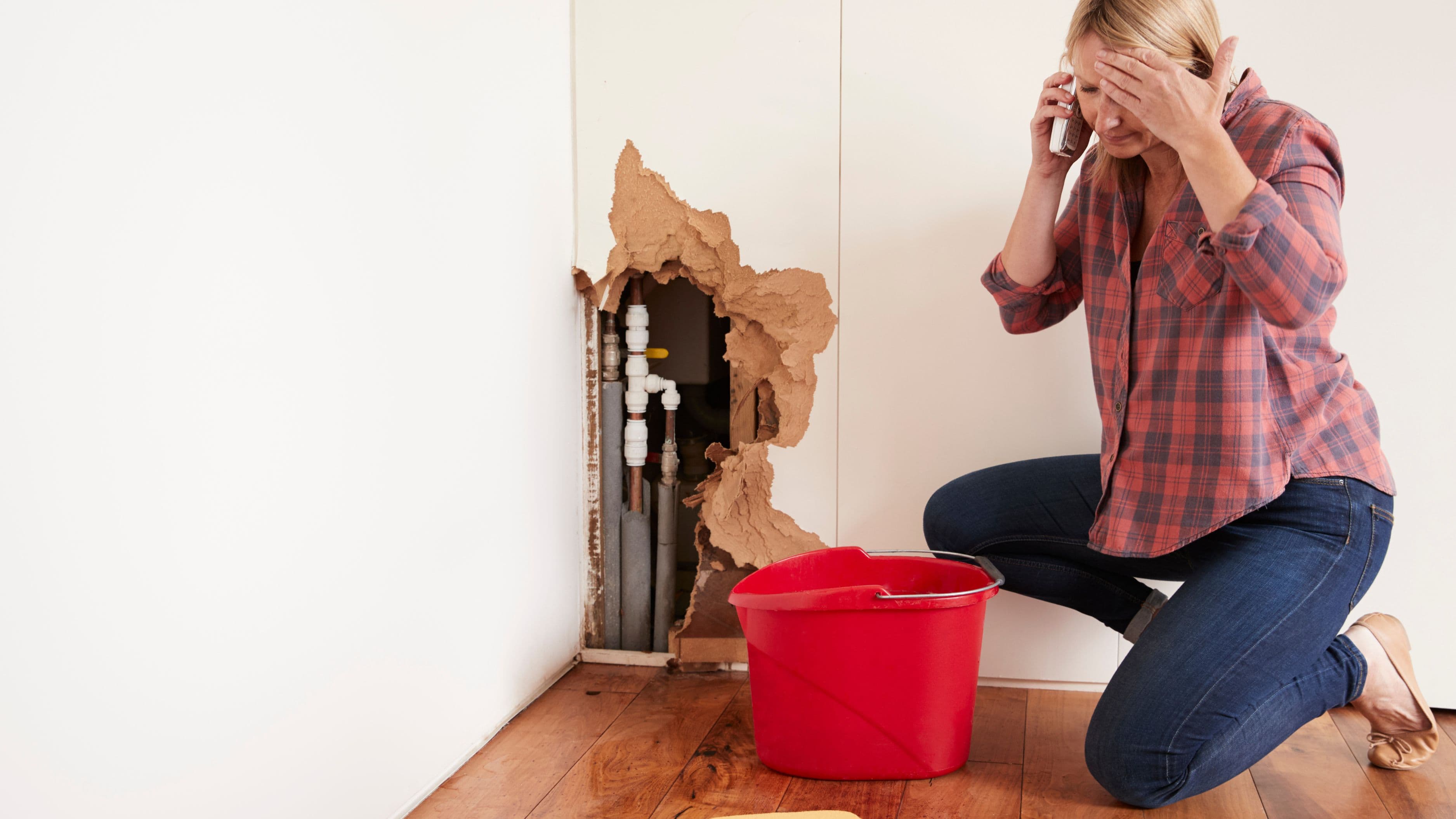1. The Dirty Filter Tax
That innocent-looking air filter? It's costing you more than you think. When your HVAC filter gets clogged with dust, pet hair, and mysterious household particles, your system has to work significantly harder to push air through your home. Think of it like trying to breathe through a stuffy nose—everything takes more effort and energy.
A dirty filter can increase your energy consumption by 5-15% according to energy efficiency experts. For the average household spending $2,000 annually on heating and cooling, that's up to $300 vanishing into thin air each year. The irony? A decent filter costs between $15-30 and takes about 30 seconds to replace. Mark your calendar to check it monthly and replace it every one to three months, depending on your home's conditions. If you have pets, allergies, or live in a dusty area, lean toward the monthly replacement schedule.
2. The Thermostat Time Warp
Your thermostat settings reveal a lot about your relationship with money. If you're still manually adjusting temperatures throughout the day—or worse, maintaining the same temperature 24/7 whether you're home or not—you're essentially leaving cash on the table. The Department of Energy estimates you can save roughly 10% per year on heating and cooling by adjusting your thermostat 7-10 degrees for eight hours daily.
Enter the programmable or smart thermostat revolution. These devices automatically adjust temperatures based on your schedule, learning your preferences and optimizing for both comfort and cost. A smart thermostat typically costs $120-250 but can pay for itself within two years through energy savings. Set it to reduce heating or cooling while you're at work or sleeping. Your wallet will thank you, and honestly, do you really notice if it's 68 degrees or 72 degrees while you're sound asleep under blankets?
3. The Duct Tape Disaster
Here's a sobering statistic: according to ENERGY STAR, about 20-30% of the air moving through your duct system is lost due to leaks, holes, and poorly connected ducts. Imagine filling your car's gas tank while 20% of it just spills onto the ground. That's essentially what's happening with your heated or cooled air.
Leaky ductwork forces your HVAC system to run longer cycles to achieve your desired temperature, dramatically increasing energy consumption and equipment wear. Even worse, these leaks often occur in unconditioned spaces like attics, crawl spaces, or garages, meaning you're essentially heating or cooling areas where no one spends time. Professional duct sealing typically costs $300-500 but can reduce your heating and cooling costs by up to 20%. That's real money returning to your pocket month after month. You can also perform a basic DIY inspection yourself using incense sticks or smoke pencils to detect airflow where it shouldn't be.
4. The Maintenance Mirage
Skipping annual HVAC maintenance feels like saving money in the moment. After all, why pay $80-150 for a tune-up when everything seems to be working fine? This is the same logic that keeps people from getting oil changes until their engine seizes. Preventive maintenance isn't an expense—it's an investment that prevents catastrophically expensive repairs down the road.
During a professional maintenance visit, technicians clean coils, check refrigerant levels, calibrate thermostats, tighten electrical connections, and lubricate moving parts. These seemingly minor adjustments keep your system running at peak efficiency and can improve your unit's efficiency by up to 25%. More importantly, catching small issues early prevents them from evolving into $3,000 compressor replacements or complete system failures. Schedule maintenance twice yearly—once before cooling season and once before heating season. Think of it as insurance against financial disaster wrapped in the form of routine care.
5. The Age-Old Enemy
Every appliance has an expiration date, and your HVAC system is no exception. Most units last 15-20 years with proper maintenance, but efficiency drops significantly in their final years. If your system is creeping past the 15-year mark, you're likely paying a premium to run an increasingly inefficient dinosaur. Older systems use outdated technology and refrigerants, operate at lower SEER ratings, and develop cumulative wear that no amount of maintenance can fully restore.
Modern HVAC systems are engineering marvels by comparison. New units boast SEER ratings of 16 or higher compared to 8-10 for older systems, potentially cutting your cooling costs in half. Yes, replacement costs $5,000-10,000 on average—a number that makes any budget-conscious person wince. But consider this: the energy savings alone often pay for the new system within 5-10 years, not to mention increased home value and the peace of mind that comes from reliable climate control. Check your system's age (usually stamped on the outdoor unit's data plate), calculate your current energy costs, and run the numbers. Sometimes the most financially savvy move is making a significant upfront investment.
6. The Insulation Illusion
Your HVAC system doesn't operate in isolation—it's locked in a constant battle against your home's insulation quality. Poor insulation is like trying to fill a bathtub with the drain open. Your HVAC can pump out perfectly conditioned air all day long, but if your home can't retain it, you're just burning money to heat or cool the great outdoors.
Proper insulation in attics, walls, and crawl spaces creates a thermal envelope that keeps conditioned air where it belongs. The EPA estimates that homeowners can save an average of 15% on heating and cooling costs by properly air sealing and insulating. Check your attic insulation depth—it should be at least 10-14 inches for most climates. Seal air leaks around windows, doors, and where utilities enter your home using weatherstripping and caulk. These relatively inexpensive upgrades work synergistically with your HVAC system, reducing the workload and extending equipment life. Your heating and cooling system shouldn't have to compensate for your home's inability to hold temperature.
7. The Sunlight Sabotage
Nature's free heating source—sunlight—can either be your ally or your enemy depending on the season and how you manage it. During summer months, direct sunlight streaming through south and west-facing windows can raise indoor temperatures by 10-20 degrees, forcing your air conditioner into overdrive. Conversely, winter sun through the same windows provides free passive heating that reduces your furnace workload.
Strategic window treatments and landscaping choices can significantly impact your HVAC costs. Install cellular shades, blackout curtains, or reflective window film on sun-drenched windows to block summer heat gain. In winter, open those same curtains during daylight hours to capture solar warmth, then close them at night to prevent heat loss through glass. Plant deciduous trees on the south and west sides of your home—they'll shade your house in summer but allow warming sunlight through their bare branches in winter. This isn't complicated home automation or expensive technology; it's simply working with natural patterns to reduce the burden on your mechanical systems.
8. The Forgotten Outdoor Unit
That hulking metal box sitting outside your home—your condenser unit—deserves more respect than it typically receives. Most homeowners completely ignore it until it stops working, but this outdoor warrior faces a brutal existence. It battles rain, snow, leaves, grass clippings, and debris while working to expel heat from your home. When the outdoor coils get caked with dirt and vegetation, heat transfer efficiency plummets.
Take ten minutes each season to inspect and clean around your outdoor unit. Clear vegetation at least two feet in all directions to ensure proper airflow. Gently spray down the coils with a garden hose to remove accumulated dirt and debris. Straighten any bent fins using a fin comb (they're cheap and available at hardware stores). Ensure the unit sits level on its pad—settling can cause refrigerant line strain and compressor damage. These simple actions cost nothing but a few minutes of your time and can improve efficiency by 10-15%. Your condenser unit is literally the hardest-working component of your cooling system; show it some love and it'll reward you with lower energy bills.
The Bigger Picture
Your HVAC system isn't just a mechanical necessity—it's a financial instrument that either builds or destroys wealth over time. Every inefficiency, every skipped maintenance appointment, every ignored warning sign compounds into real money leaving your bank account. The families who build lasting wealth aren't necessarily the ones earning the highest incomes; they're the ones who eliminate unnecessary expenses and make smart infrastructure decisions.
What if you redirected just half of your HVAC waste into investments? That $500-1,000 annually could become $15,000-30,000 over a working career when invested at average market returns. Your home's comfort systems shouldn't stand between you and your financial goals. They should work efficiently, quietly, and economically in the background while you focus on building the life you want.
Take an honest look at your HVAC situation this week. When did you last change the filter? How old is your system? Could a smart thermostat or duct sealing make a meaningful difference? Small actions create cascading benefits—lower bills, reduced environmental impact, improved comfort, and equipment longevity. The question isn't whether you can afford to optimize your HVAC system. The real question is: can you afford not to?
📚 Sources
1. U.S. Department of Energy. "Energy Saver Guide: Tips on Saving Money and Energy at Home." Office of Energy Efficiency & Renewable Energy.
2. ENERGY STAR. "Improving Duct System Performance." U.S. Environmental Protection Agency.
3. U.S. Department of Energy. "Thermostats." Office of Energy Efficiency & Renewable Energy, energy.gov.
4. Environmental Protection Agency. "A DIY Guide to Sealing and Insulating with ENERGY STAR." EPA ENERGY STAR Program.
🔍 Explore Related Topics

